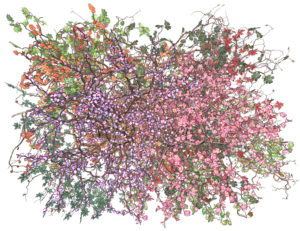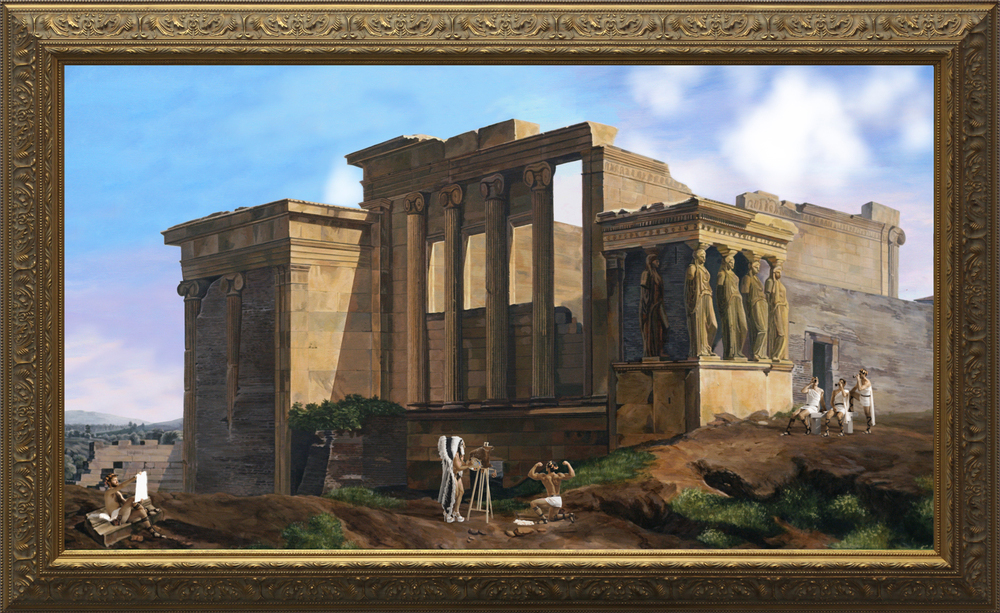One piece of art to see
by Juniper Leherissey, executive director

While my personal favorite in the Harwood Museum right now is Jennifer Steinkamp’s mesmerizing sway of Bouquet I in the Remote Possibilities: Digital Landscapes from the Thoma Foundation Collection exhibition, the piece that I think is the most provocative and warrants deeper observation is Kent Monkman’s The Symposium.
Kent Monkman, a Canadian First Nations artist of Cree and Irish ancestry, is known internationally for his historical revisionist paintings that recreate works that inspired Westward Expansion like those by Thomas Moran and Alfred Bierstadt, but meaningfully places an Indigenous artist at the canvas, spotlighting the power of representation of landscape; asking who is doing the representing and who is narrating history.

In Symposium, Monkman recreates the 1805 painting of the Acropolis in Athens by Theodore Turpin de Chrisse, with one significant addition: a Native American in full headdress painting at an easel. The subversive and comedic work challenges the narrative of the original painting and the prominence of singular stories from the “victors” of history.
As articulated by our curator, Nicole Dial-Kay, “It is important that anyone visiting or living in the West experience this work of art as it compels us all to reconsider the beautiful landscape as something not just to be consumed through vacation must-see checklists and Instagrammable photographs, but as a powerful propaganda tool in American history. The representation of the American West in paintings and photographs of the late 19th and early 20th century compelled Westward Expansion and the attempted genocide of its original inhabitants. What would have been different in American history if the tools of representation had been in the hands of Native American peoples?”
This is a unique treat to see six internationally recognized digital artists featured in Taos. This exhibition sourced from the vast Thoma Foundation art collection is open through Feb. 2022. All the exhibitions at the Harwood Museum through the winter create dialogue around landscape and our relationship to it and its original inhabitants.

